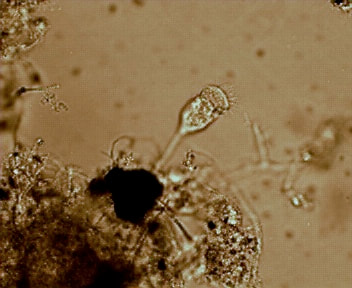- Meet effluent treatment goals
- SV30 & SVI within easy to operate range
- D.O. is above 2 mg/L throughout the system
- OUR or SOUR is at baseline indicating low growth rates
- F/M in target range
- Indicator protozoa are present & active (often stalk ciliates)
But at a bacterial level, what is a healthy MLSS? Using Aster Bio's Environmental Genomics testing, we now have an understanding of what a healthy MLSS looks like with respect to microbial species. In this case we are looking at extended aeration activated sludge which is the most common system that we encounter.
Early in the system startup or following a major upset, we see a reversion to k-rate organisms such as Pseudomonas, Bacillus, and a number of less known fast growing organisms that thrive with high COD/BOD with associated low D.O. and perhaps quasi toxic components. As fast growers, these organisms have a high OUR (respiration rate) and grow rapidly to reduce COD/BOD. As the the MLSS OUR drops, the cells aggregate lowering free bacteria in solution. If an upset, they colonize on the existing floc mass which includes extracellular polymers, dead biomass, particulates, and a lower fraction than normal living biomass.
As the system matures, the mix of bacteria begins to favor r-rate strategist microbes that thrive in low F/M conditions seen in activated sludge or when water quality reaches effluent targets. The r-rate strategists tend to form EPS to store food and vital nutrients. This builds and maintains floc. Common r-rate wastewater strategists include Thauera, Zooglea, and AOB/NOB bacteria (in systems with nitrogen removal)


 RSS Feed
RSS Feed